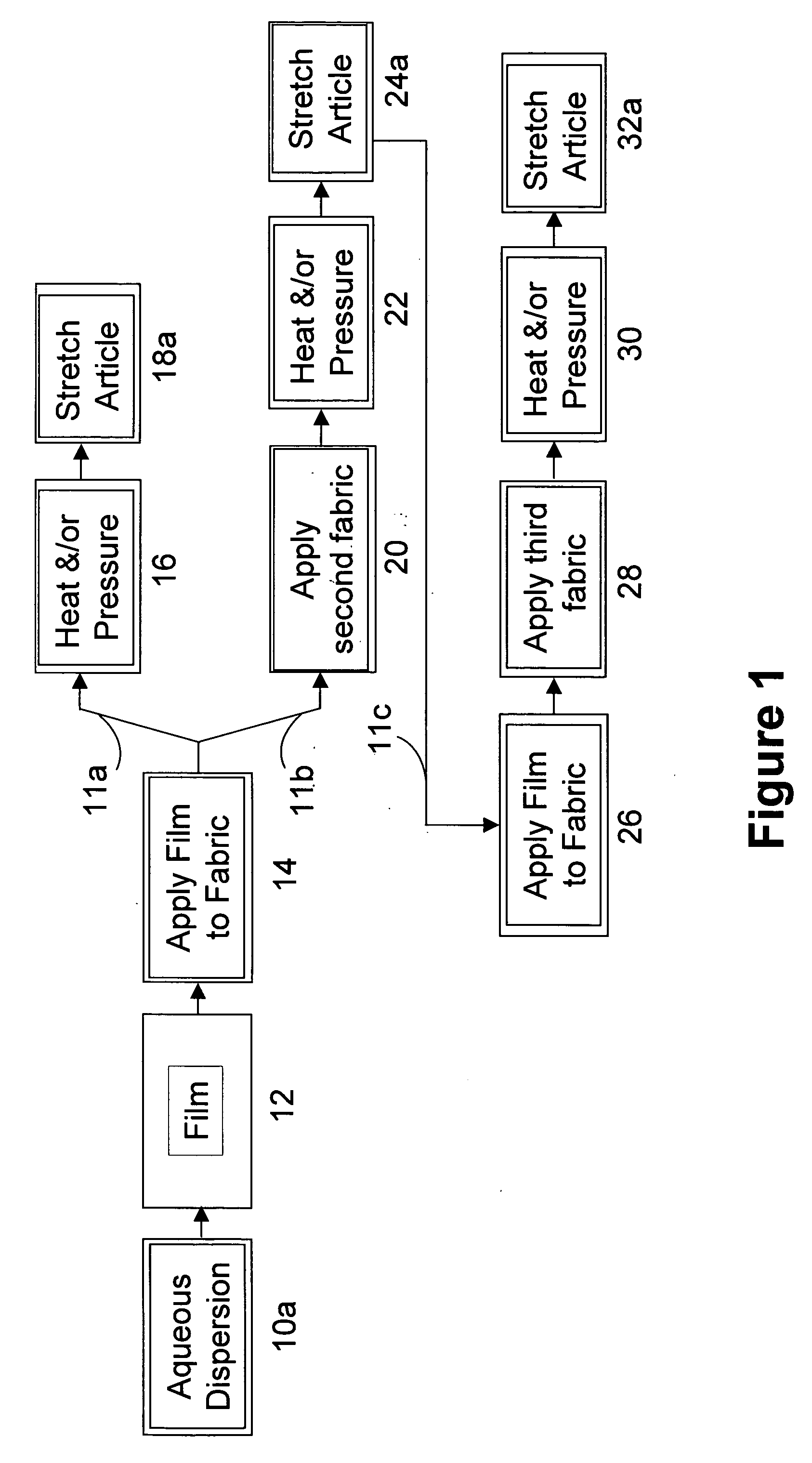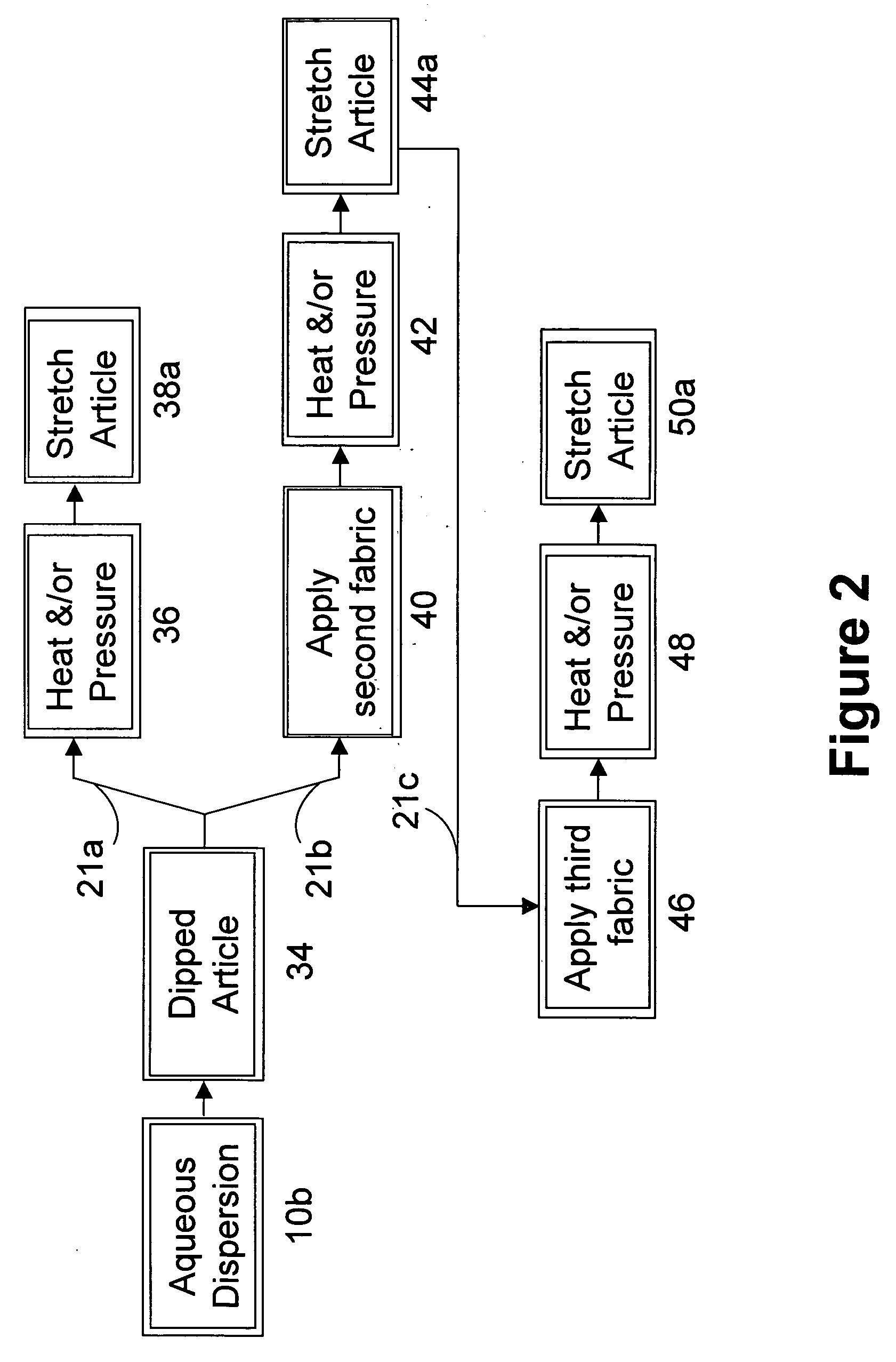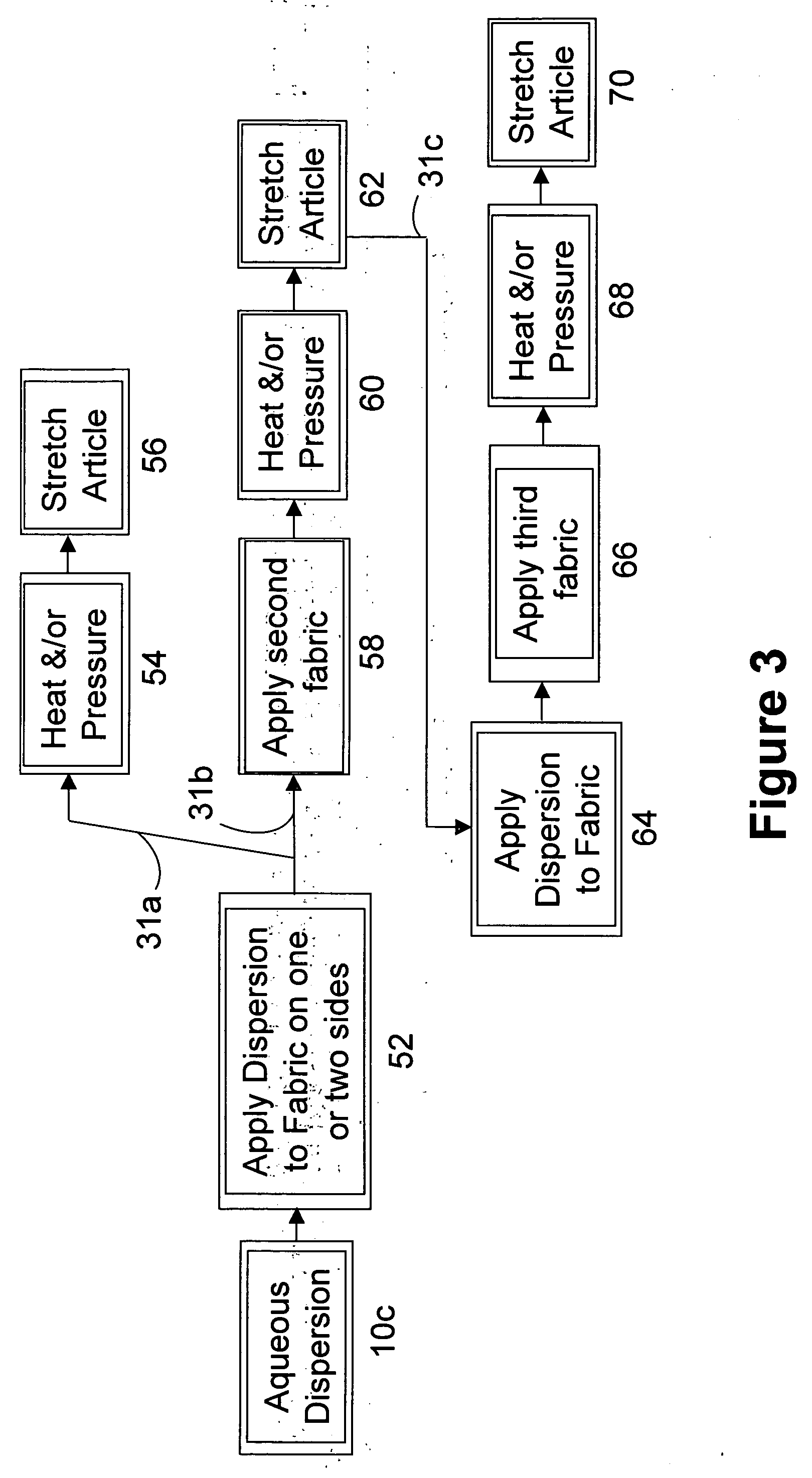Solvent free aqueous polyurethane dispersions and adhesive films therefrom for stretch fabrics
a technology of aqueous polyurethane dispersions and adhesive films, applied in the field of new products, can solve the problems of reducing the shelf life of products incorporating such polyurethanes, limiting storage stability, and hot-melt adhesives
- Summary
- Abstract
- Description
- Claims
- Application Information
AI Technical Summary
Benefits of technology
Problems solved by technology
Method used
Image
Examples
example 1
[0098] The preparation of the prepolymer was conducted in a glove box with nitrogen atmosphere. A 2000 ml Pyrex® glass reaction kettle, which was equipped with an air pressure driven stirrer, a heating mantle, and a thermocouple temperature measurement, was charged with about 382.5 grams of Terathane® 1800 glycol and about 12.5 grams of DMPA. This mixture was heated to about 50° C. with stirring, followed by the addition of about 105 grams of Lupranate® MI diisocyanate. The reaction mixture was then heated to about 90° C. with continuous stirring and held at about 90° C. for about 120 minutes, after which time the reaction was completed, as the % NCO of the mixture declined to a stable value, matching the calculated value (% NCO aim of 1.914) of the prepolymer with isocyanate end groups. The viscosity of the prepolymer was determined in accordance with the general method of ASTM D1343-69 using a Model DV-8 Falling Ball Viscometer, (sold by Duratech Corp., Waynesboro, Va.), operated ...
example 2
[0099] The preparation procedures were the same as Example 1, except that the following ingredients were used in the reaction mixture:
Terathane® 1800: about 361 grams;
DMPA: about 19 grams; and
Mondur® ML: about 120 grams.
example 3
[0100] The preparation procedures were the same as Example 1, except that the following ingredients were used in the reaction mixture:
Terathane® 1800: about 349 grams;
DMPA: about 21 grams; and
Mondur® ML: about 130 grams.
PUM
| Property | Measurement | Unit |
|---|---|---|
| viscosity | aaaaa | aaaaa |
| viscosity | aaaaa | aaaaa |
| temperatures | aaaaa | aaaaa |
Abstract
Description
Claims
Application Information
 Login to View More
Login to View More - R&D
- Intellectual Property
- Life Sciences
- Materials
- Tech Scout
- Unparalleled Data Quality
- Higher Quality Content
- 60% Fewer Hallucinations
Browse by: Latest US Patents, China's latest patents, Technical Efficacy Thesaurus, Application Domain, Technology Topic, Popular Technical Reports.
© 2025 PatSnap. All rights reserved.Legal|Privacy policy|Modern Slavery Act Transparency Statement|Sitemap|About US| Contact US: help@patsnap.com



